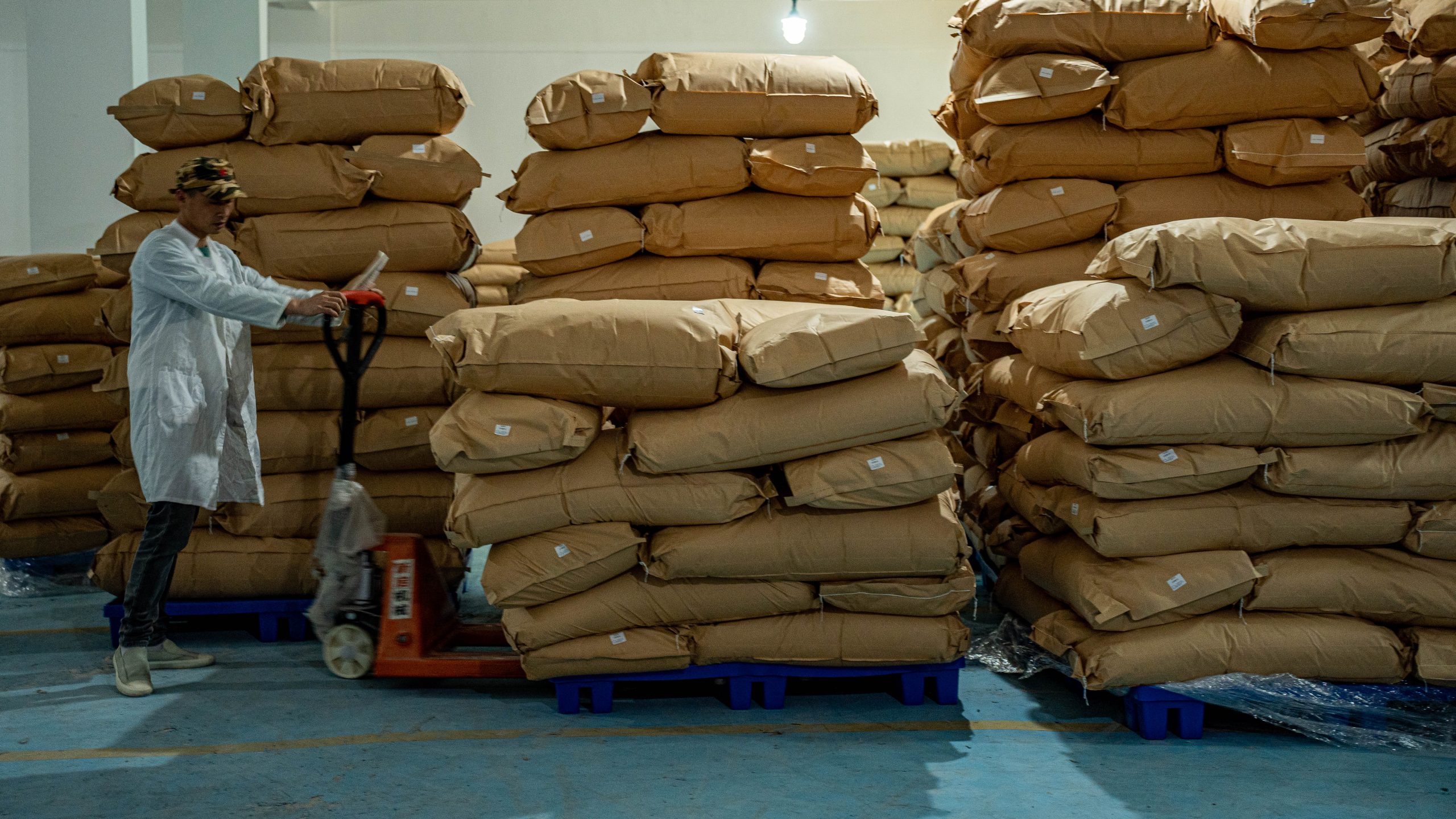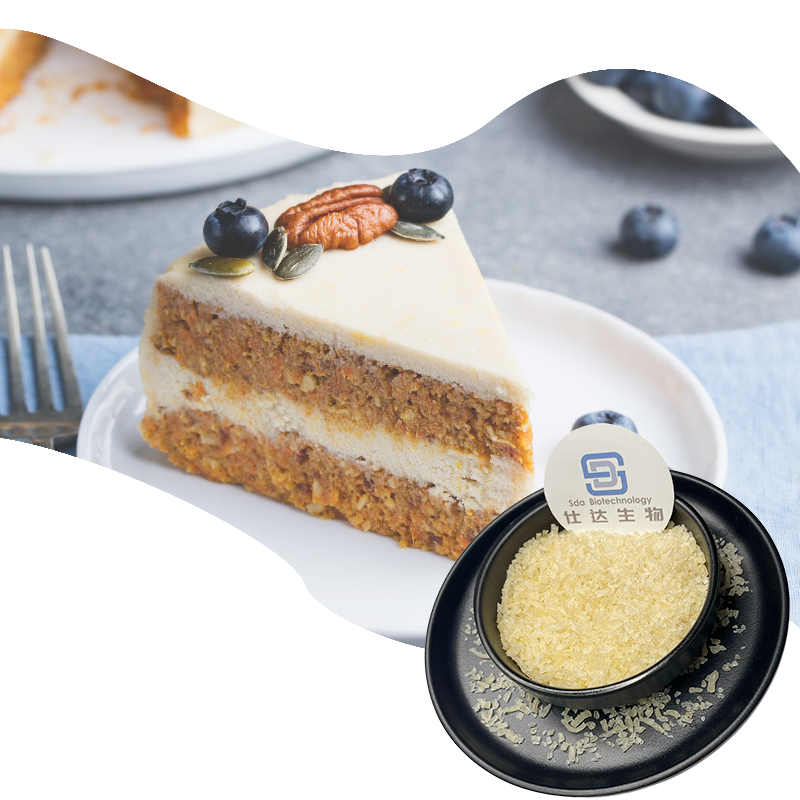Table of Contents
فوائد الجيلاتين البقري في الصناعات الغذائية
عملية إنتاج الجيلاتين البقري
الجيلاتين البقري هو مكون شائع يستخدم في مجموعة واسعة من المنتجات الغذائية والصيدلانية. وهو مشتق من الكولاجين الموجود في الجلد والعظام والأنسجة الضامة للماشية. تتضمن عملية إنتاج الجيلاتين البقري عدة خطوات لاستخراج وتنقية بروتين الكولاجين.
الخطوة الأولى في عملية الإنتاج هي جمع المواد الخام. يتضمن ذلك الحصول على الجلود والعظام والمنتجات الثانوية الأخرى من مسالخ الماشية. يتم بعد ذلك تنظيف هذه المواد الخام ومعالجتها لإزالة أي شوائب مثل الشعر والدهون والملوثات الأخرى.
بمجرد تنظيف المواد الخام، تخضع لعملية تعرف باسم الاستخراج. يتضمن ذلك معالجة المواد الخام بمحاليل حمضية أو قلوية لتكسير بروتين الكولاجين إلى ببتيدات أصغر. يتم بعد ذلك تصفية المحلول الناتج لإزالة أي جزيئات صلبة وشوائب.
الخطوة التالية في عملية الإنتاج هي تنقية محلول الكولاجين. يتضمن ذلك إخضاع المحلول لسلسلة من خطوات الترشيح والتنقية لإزالة أي شوائب وملوثات متبقية. تساعد هذه العملية على التأكد من أن المنتج النهائي نقي وخالي من أي مواد غير مرغوب فيها.
بعد التنقية، يتم تركيز محلول الكولاجين عن طريق إزالة الماء الزائد عن طريق التبخر أو طرق أخرى. وهذا يساعد على زيادة محتوى البروتين في المحلول وتحسين جودة المنتج النهائي.

اسم المنتج:
جيلاتين\ بودرة
نوع الاستخدام:
| وظائف مثل الجيل، والرغوة، والثبات، والسماكة، والالتصاق، والاستحلاب. | مدة الصلاحية: |
| 2 سنة | المحتوى: |
| جلد الحيوانات/العظام | رقم سجل المستخلصات الكيميائية: |
| أسماء أخرى: | الجيلاتين الصالح للأكل/مسحوق الجيلاتين/الجيلاتين |
| رقم الموديل: | 9000-70-8 |
| 240 بلوم-260 بلوم | حجم الجسيمات: |
| 8-60 شبكة | الحد الأدنى لكمية الطلب: |
| 500 كيلوجرام | رمز النظام المنسق: |
| الحزمة: | 25 كجم حقيبة التعبئة |
| تعليمات الاستخدام: | 3503001000 |
| يذوب في الماء حسب نسبة الاستخدام | يتم بعد ذلك إخضاع محلول الكولاجين المركز لعملية تعرف باسم الجيل. يتضمن ذلك تبريد المحلول إلى درجة حرارة معينة للسماح لبروتين الكولاجين بتكوين بنية تشبه الهلام. يتم بعد ذلك تجفيف الهلام ومعالجته إلى شكل مسحوق أو صفيحة، اعتمادًا على الاستخدام المقصود للجيلاتين البقري. الخطوة الأخيرة في عملية الإنتاج هي التعبئة والتخزين. يتم تعبئة الجيلاتين البقري في عبوات محكمة الإغلاق لحمايته من الرطوبة والملوثات. ثم يتم تخزينه في مكان بارد وجاف للحفاظ على جودته ومدة صلاحيته. في الختام، تتضمن عملية إنتاج الجيلاتين البقري عدة خطوات لاستخلاص وتنقية وتركيز بروتين الكولاجين من المنتجات الثانوية للماشية. تساعد هذه العملية على ضمان أن المنتج النهائي نقي وعالي الجودة ومناسب للاستخدام في مجموعة متنوعة من التطبيقات الغذائية والصيدلانية. الجيلاتين البقري هو مكون متعدد الاستخدامات يوفر الملمس والثبات والخصائص الوظيفية الأخرى لمجموعة واسعة من المنتجات. يتم التحكم في عملية الإنتاج بعناية لتلبية معايير الجودة الصارمة وضمان سلامة وفعالية المنتج النهائي. |
| المخاطر الصحية والخلافات المحيطة بالجيلاتين البقري | علاوة على ذلك، هناك جدل مستمر حول الآثار الأخلاقية والدينية لاستخدام الجيلاتين البقري في المنتجات الغذائية والصيدلانية. على سبيل المثال، الجيلاتين المشتق من الأبقار غير مناسب للاستهلاك من قبل الأفراد الذين يتبعون نظامًا غذائيًا نباتيًا، لأنه منتج مشتق من الحيوانات. وبالمثل، فإن الأفراد الذين يلتزمون ببعض القيود الغذائية الدينية، مثل أولئك الذين يتبعون نظامًا غذائيًا حلالًا أو كوشر، قد يتجنبون أيضًا المنتجات التي تحتوي على الجيلاتين البقري بسبب المخاوف بشأن مصدر الجيلاتين والطرق المستخدمة لإنتاجه. رغم المخاطر والخلافات، لا يزال الجيلاتين البقري يستخدم على نطاق واسع في مجموعة متنوعة من المنتجات، بما في ذلك الحلوى والحلويات ومنتجات الألبان والكبسولات الصيدلانية. لمعالجة المخاوف بشأن السلامة والآثار الأخلاقية لاستخدام الجيلاتين البقري، بدأت بعض الشركات المصنعة في استكشاف مصادر بديلة للجيلاتين، مثل المصادر النباتية أو المشتقة من البحر. في الختام، في حين أن الجيلاتين البقري متعدد الاستخدامات ويستخدم على نطاق واسع وهو عنصر أساسي في الصناعات الغذائية والدوائية، فهو لا يخلو من المخاطر الصحية والخلافات. يجب أن يكون المستهلكون على دراية بإمكانية التلوث بمسببات الأمراض الضارة، وخطر الحساسية، والآثار الأخلاقية والدينية لاستخدام الجيلاتين البقري في المنتجات. مع استمرار تقدم الأبحاث والتكنولوجيا، من المحتمل أن تصبح المصادر البديلة للجيلاتين متاحة بسهولة أكبر، مما يوفر للمستهلكين خيارات أكثر أمانًا واستدامة لعوامل التبلور في المستقبل. |
The concentrated Collagen solution is then subjected to a process known as gelation. This involves cooling the solution to a specific temperature to allow the collagen Protein to form a gel-like structure. The gel is then dried and processed into a powder or sheet form, depending on the intended use of the bovine gelatin.
The final step in the production process is packaging and storage. The bovine gelatin is packaged in airtight Containers to protect it from moisture and contaminants. It is then stored in a cool, dry place to maintain its quality and shelf life.
In conclusion, the production process of bovine gelatin involves several steps to extract, purify, and concentrate the collagen protein from cattle by-products. This process helps to ensure that the final product is pure, high-quality, and suitable for use in a variety of food and pharmaceutical applications. Bovine gelatin is a versatile ingredient that provides texture, stability, and other functional properties to a wide range of products. Its production process is carefully controlled to meet strict quality standards and ensure the Safety and efficacy of the final product.
Health Risks and Controversies Surrounding Bovine Gelatin
Bovine gelatin, derived from the collagen found in the skin, bones, and connective tissues of cows, is a common ingredient used in a wide range of food and pharmaceutical products. While it is widely used as a gelling agent, stabilizer, and thickener in various products, there are health risks and controversies surrounding its use that have raised concerns among consumers and health experts.
One of the main health risks associated with bovine gelatin is the potential for contamination with harmful pathogens such as E. coli, salmonella, and bovine spongiform encephalopathy (BSE), also known as mad cow disease. These pathogens can pose serious health risks to consumers, especially if the gelatin is not properly processed and purified before being used in products.
In addition to the risk of contamination, there are also concerns about the potential allergenicity of bovine gelatin. Some individuals may be allergic to proteins found in cow-derived products, which can Lead to allergic reactions ranging from mild skin rashes to severe anaphylaxis. As a result, individuals with known allergies to Beef or cow-derived products are advised to avoid products containing bovine gelatin.

Furthermore, there is ongoing controversy surrounding the ethical and religious implications of using bovine gelatin in food and pharmaceutical products. For example, gelatin derived from cows is not suitable for consumption by individuals following a vegetarian or vegan diet, as it is an animal-derived product. Similarly, individuals who adhere to certain religious dietary restrictions, such as those following a halal or kosher diet, may also avoid products containing bovine gelatin due to concerns about the source of the gelatin and the methods used to produce it.
Despite these health risks and controversies, bovine gelatin continues to be widely used in a variety of products, including candies, Desserts, Dairy Products, and pharmaceutical capsules. To address concerns about the safety and ethical implications of using bovine gelatin, some manufacturers have started to explore alternative sources of gelatin, such as plant-based or marine-derived sources.
In conclusion, while bovine gelatin is a versatile and widely used ingredient in the food and pharmaceutical industries, it is not without its health risks and controversies. Consumers should be aware of the potential for contamination with harmful pathogens, the risk of allergic reactions, and the ethical and religious implications of using bovine gelatin in products. As research and technology continue to advance, it is likely that alternative sources of gelatin will become more readily available, providing consumers with safer and more sustainable options for gelling agents in the future.

